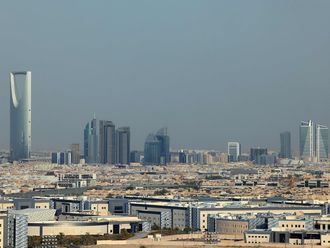It sounds innocuous enough — an ‘industrial structure adjustment’ — but this roadmap may generate a massive shake-up across industries and turn Chinese companies into more aggressive global entities.
The Chinese government will push forward increased mergers and consolidation in nine sectors including auto manufacturing, steel, cement, shipbuilding, electrolytic aluminum, rare earth, electronic information, pharmacy and agriculture. The range of sectors under consolidation — from farm to resources and high-end electronics — suggests that a major upheaval may be in the offing for China’s industrial landscape this year.
A start has already been made with the rare earths industry. Last week, China’s top producer informed the Shanghai Stock Exchange that it will gain control of 12 other firms in the sector, making its first move to form a mega company. Inner Mongolia Baotou Steel Rare-Earth (Group) Hi-Tech Co, also known as REHT, signed framework agreements on consolidating and restructuring with other rare earth firms based in Inner Mongolia. Under the agreements, the 12 firms and their shareholders will transfer 51 per cent of the companies’ combined equity to REHT for free while the parent company will plan their management, production and support them with technology and export quota. As the world’s largest producer of rare earth metals, China now supplies more than 90 per cent of the global demand.
Earlier in the month, another significant move was made to integrate and merge central State-owned enterprises in the electronics sector. IT conglomerate China Electronics Corp acquired Irico Group, a maker of photovoltaic equipment, TV picture tubes and organic light-emitting diodes. After the merger, Irico Group will become a fully owned subsidiary of China Electronics Corp.
A common feature of these nine industries, earmarked for consolidation, is their economies of scale rendered weak by defective structures, isolated enterprises and lack of sector leaders. This results in duplicated development activities, surplus production and vicious price competition. The biggest hurdle is that scattered and outdated production capacity has led to redundant projects and wastage. The new industrial structure adjustment plan proposes various fine-tuning measures to cut price competition, surplus production and the duplication of research and development. This, along with plans for technical upgrade, signifies massive opportunity for foreign companies. Policy-makers have made it clear that foreign capital is welcome and can hold stakes in enterprises or engage in mergers under supervision.
China currently lacks agile enterprises that can be fully competitive on a global scale, especially in manufacturing sectors. For years, authorities have been advocating higher industrial concentration in many sectors without achieving much headway. Experts believe simple administrative measures and policy support won’t be enough to push forward the kind of industrial consolidation and technical upgrades that are being targeted. The key lies in creating healthy market competition in which only the best entities survive.
But here lies a conundrum: the government does not want to blindly flush out smaller companies. Large state-owned enterprises, for instance, may have more resources to handle technical upgrades, but smaller and private firms are at times the main drivers of technical innovation. Prolonged bias towards state-owned behemoths has rendered them unwieldy and unable to face international competition. Opaque government support and subsidies to these companies tarnish the image of Chinese industry globally and creating yet more gigantic state corporations may not be the best way out.
The problem is more acute in the steel sector. Authorities are planning to come down heavily on the industry and are working to slash the large number of steel producing enterprises and phase out outdated capacity through mergers. The target is to raise the concentration ratio of top 10 steel producers to around 60 per cent by 2015. For the auto sector, China aims to foster three to five large and competitive automakers and wants the top 10 to account for 90 per cent of the industry’s total production by 2015. It remains to be seen whether larger mega-corporations, unaccompanied by requisite financial sector reforms, will generate the required confidence globally.












